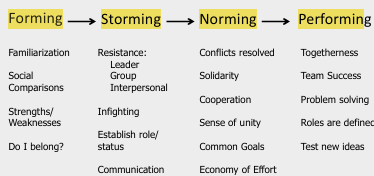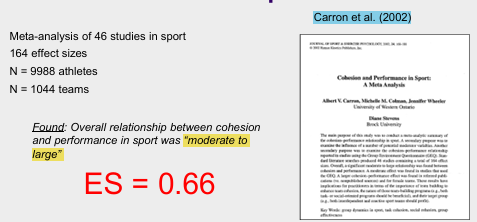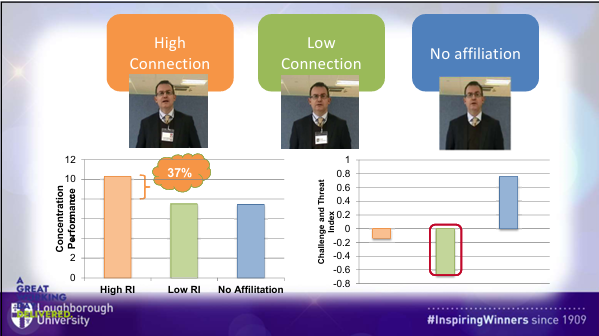4 - Group Dynamics + Team Cohesion
1/23
There's no tags or description
Looks like no tags are added yet.
Name | Mastery | Learn | Test | Matching | Spaced |
|---|
No study sessions yet.
24 Terms
Why Study Group Dynamics?
Groups are pervasive
Highly influential
Possibilities for research

Difference Between Groups + Teams

Becoming a Team - Linear Perspective (Tuckman & Jenkins 1977)

Conceptual Model of Cohesion (Carron 1982)

Characteristics of Cohesion

Types of Cohesion
Task - degree to which members of a group work together to achieve a common goal
Social - degree to which members of a group like each other enjoy one another’s company
Attraction to group
Group integration
Conceptual Framework of Group Effectiveness (Steiner 1972)

Group Process Losses - Ringlemann Effect
Tendency for individual members of a group to become increasingly less productive as the size of the group increases
How to Enhance Group Cohesion
Social loaf - bigger group, less effort
Co-ordination loss - bigger group, harder to coordinate
Causes of Social Loafing
Free Rider - perception that their effort is unimportant for outcome
Minimise Strat - motivated to get by doing as little as possible
Allocation Strat - save best efforts for when beneficial to self
False perception that Increased effort won’t be recognised
Counteracting Social Loafing (Carron (1988)
Emphasise importance of individual contribution
Increase accountability
Group Environment Questionnaire (Widmeyer, Brawley, Carron 1985)
Individual v Group
Task + Social Cohesion
Reliable, valid measure
Measures peoples reason’s to be apart of the group
Antecedents - Team (squad) Size
SC highest for 6
TC best for 3
Performance worst for 9
Antecedents - Role Clarity + Acceptance
Formal Roles
Dictacted by nature of organisation
Specific team/tactical roles
Informal Roles
Evolve from group dynamics

Antecedents - Team Stability
Low turnover = more effective
Cohesion-Performance Relationship
Team Cohesion = Better Performance

Developing Team Cohesion (Carron 1997, 2007)
Increase team identity
Increase SC
Clarify team goals
Improve team communication

Enhancing Group Cohesion

Science of Togetherness - Self Categorisation Theory (Turner et al 1987, 1994)

Shared Sense of ‘Us’
Turner - Group values/norms drive cognition + behaviour
Slater - shared values between leaders & followers are the basis for group members mobilisation of effort

Power of Personal Disclosure Mutual Sharing (PDMS) for Wellbeing
where individuals within a team disclose personal experiences, including challenges, successes, and values
Using PDMS
PDMS in Football
Foreign players lack togetherness + effective communications
Summary
